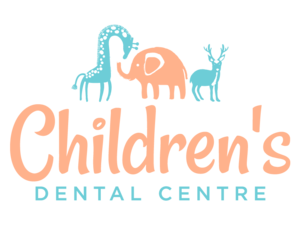Space Maintainers Part 1 - When to Maintain Space
One topic that always baffled many of us as new grads is when to maintain space, or not to. We loosely knew that it existed, but we didn’t know any general dentists who did it, so it existed in the realm of ‘specialists only’. One caveat with this topic is that the evidence is a tad limited on it…
The good news is, it doesn’t have to be complicated, and it can certainly be managed in house where it is appropriate. This is the first of a two-part series which will cover.
When should we maintain the space and
How do we do it.
A simple band and loop appliance
Deciduous second molars (AKA E’s)
In the realm of arch space, the early loss of E’s is associated with the greatest space loss, therefore we
Try to retain E’s when at all possible, as natural tooth is the best space maintainer and
If loss is unavoidable, then whenever possible DO maintain the space.
Prior to the eruption of the 6’s however, this is not really possible. Yes, the distal shoe space maintainer exists, but who wants to put a highway for bacteria right beside a developing permanent tooth bud? In the event of loss of the E before the eruption of the 6, our conversation with the parent is that space loss IS inevitable, and that we will need to monitor and that orthodontic intervention will likely be required later. This could involve a short course of fixed orthodontic to distilise the affected 6 OR as part of a comprehensive orthodontic treatment plan.
Significant space loss in quadrant 2 due to extraction of #65 prior to eruption of the 6.
Deciduous first molars (AKA D’s)
D’s present a bit more of a grey area. Our rule of thumb is that space maintenance for the early loss of the D is beneficial prior to the eruption of the 6’s into intercuspal occlusion. Once the first permanent molars are in good occlusion, the space loss from the D is much less (only a few mm’s if much at all) and begs the question if space maintenance is worth it from a cost, and unnecessary treatment for the child point of view. Generally, there is a tendency for the space to close, but it is from distal drifting of the canine as opposed to mesial movement of the 6 and E.
The way we talk to parents, is that space maintenance is recommended if the permanent molars are not erupted, and it will require monitoring at each 6 monthly visit. If it is stable and not bothering the child, then leave it and remove only when the premolar starts to erupt. However, if it fails after the 6’s have fully erupted, then it is unlikely to require replacement.
Canines
Canines are probably the most confusing aspect. Early loss of deciduous canines is not usually associated with overall loss of arch length. That being said, unilateral early loss of a canine will often result in a midline shift, so some consider extracting the canine on the other side to balance this out. However, keep in mind that the primary cause for early loss of a canine is generally crowding and premature resorption from the permanent lateral incisor!
There has also been some research done that suggests bilateral early loss of mandibular canines can result in lingual tipping of the lower incisors and, hence reducing arch length. Potentially the placement of a lower lingual archwire can counteract this. It can get a bit confusing at times, if in doubt, this may warrant a referral to your orthodontic or paediatric dental collegue.
Incisors
Early loss of deciduous incisors may result in redistribution of anterior spacing (ie, the deciduous anteriors may shift around and ‘close’ the space), however the intercanine width does not appear to be greatly affected, so maintaining the space is not routinely done. There is some research that suggests loss of incisors prior to the eruption of the deciduous canines may result in subsequent crowding, but the authors also acknowledge that placing any kind of fixed appliance in children under the age of 2 presents a compliance and oral hygiene challenge. So again, space maintenance here is rarely done.
Many parents will worry about the effect to speech and eating upon the early loss of one or more deciduous incisors. Studies done in this area have had small sample sizes and varying results. The verdict seems to be that you can reassure parents that in these cases a speech impairment is unlikely to occur. If it does, then it usually self-corrects in a short time. If they develop a true speech impairment, then they were likely to develop one with or without tooth loss (coincidence not causation). And as for eating - kids are fantastically adaptable creatures - they will find a way! In terms of aesthetics, it is usually driven by the parent - children don’t seem to care until they are about 5 or 6 years old, in which case their friends are often at the stage of also losing teeth. There are aesthetic space maintainers (such as a Hollywood bridge), but they are usually more trouble than they are worth.
Interestingly, it appears the early loss of deciduous incisors may have more of an effect on the eruption timing and pattern of adult teeth, with delayed or ectopic eruptions possible. But that’s a topic for another day.
So we will leave with a summary here, and next time we will tackle the ‘how’ portion of things.
If you were interested in space maintenance in your clinic, you can find pre-fabricated kits at our paediatric dental company website KITS – The Paediatric Dental Company (tp-dc.com.au). We will discuss next time, how to do space maintenance and which appliance is best in the variable situations.
Tim and Erica



